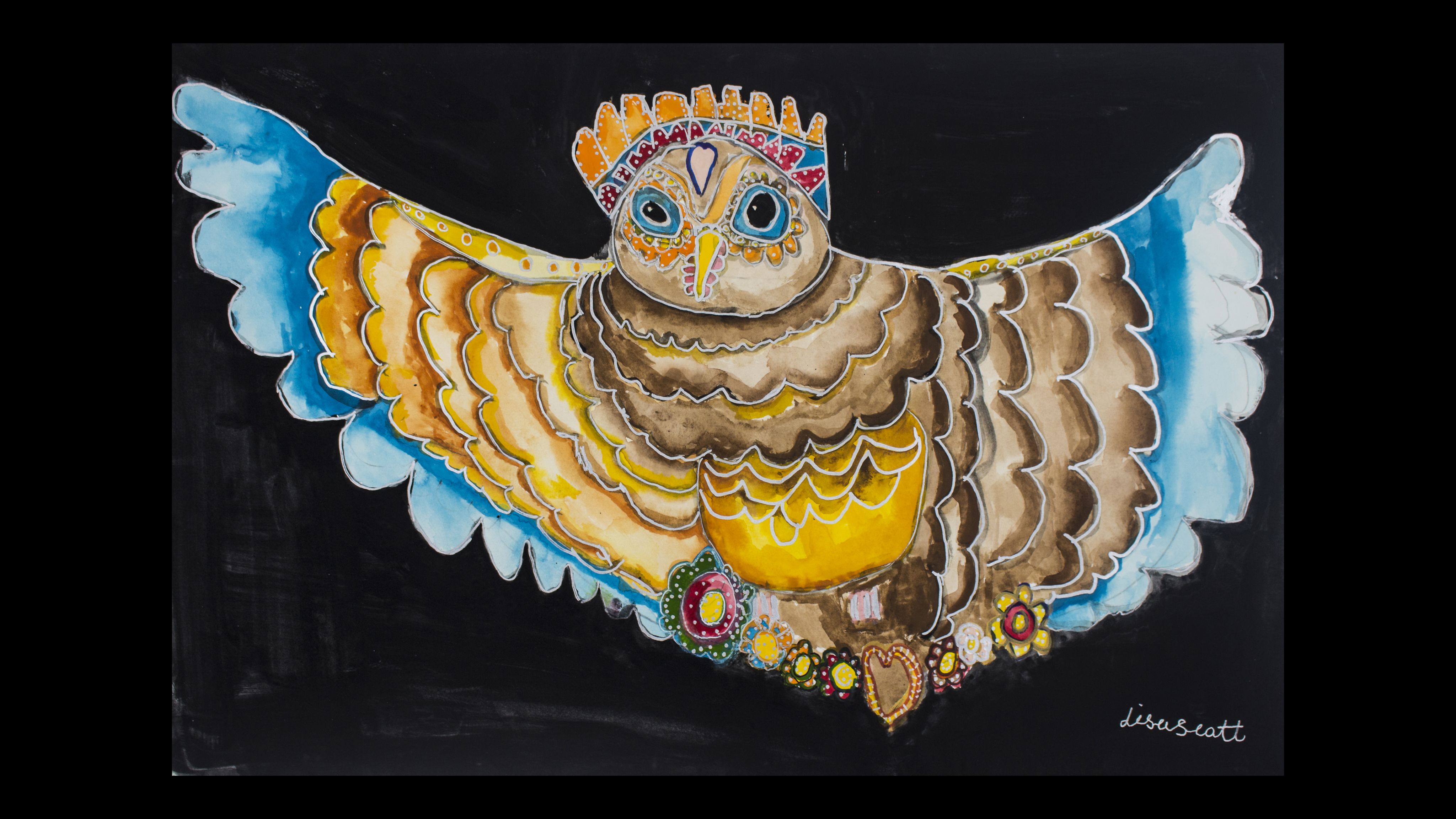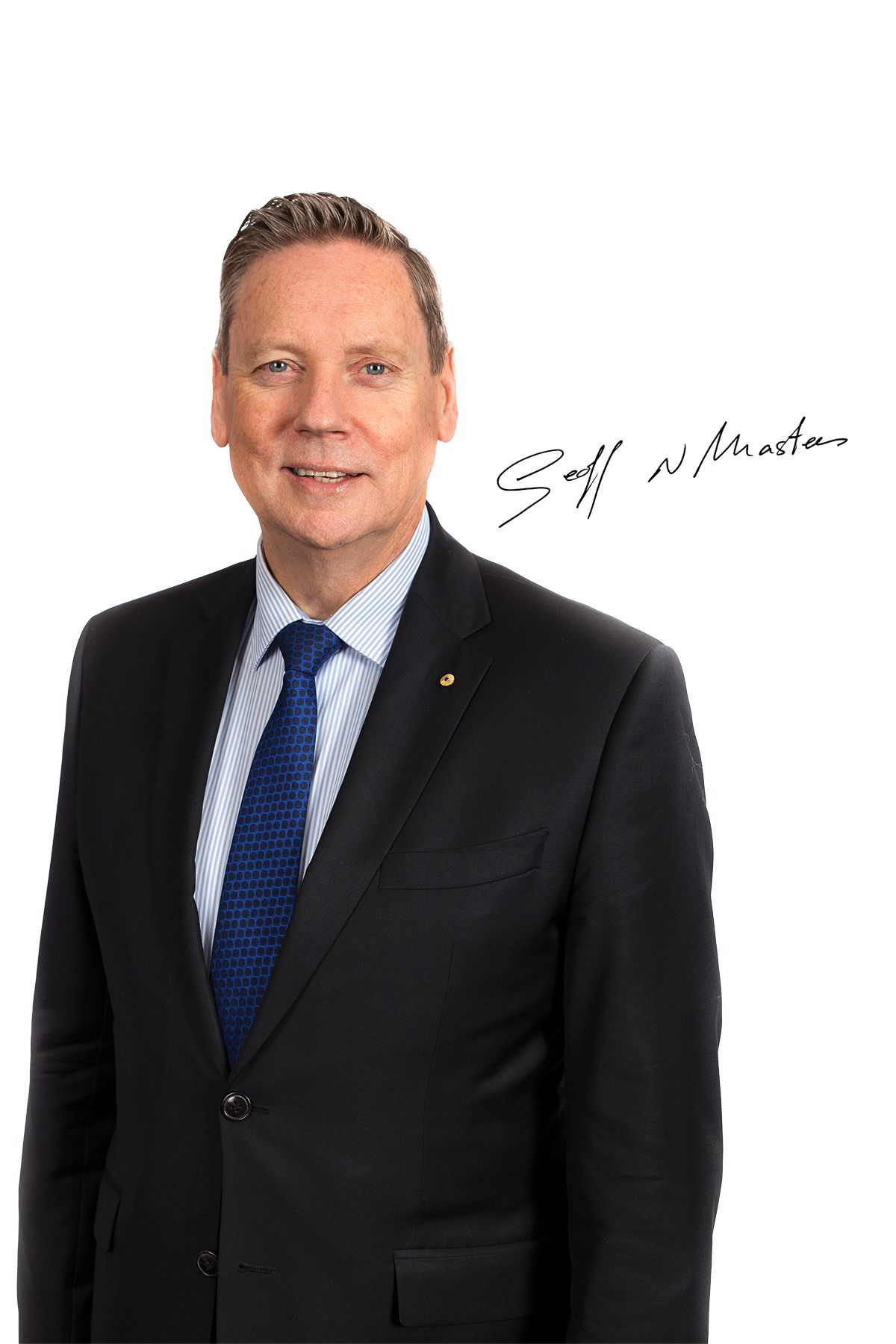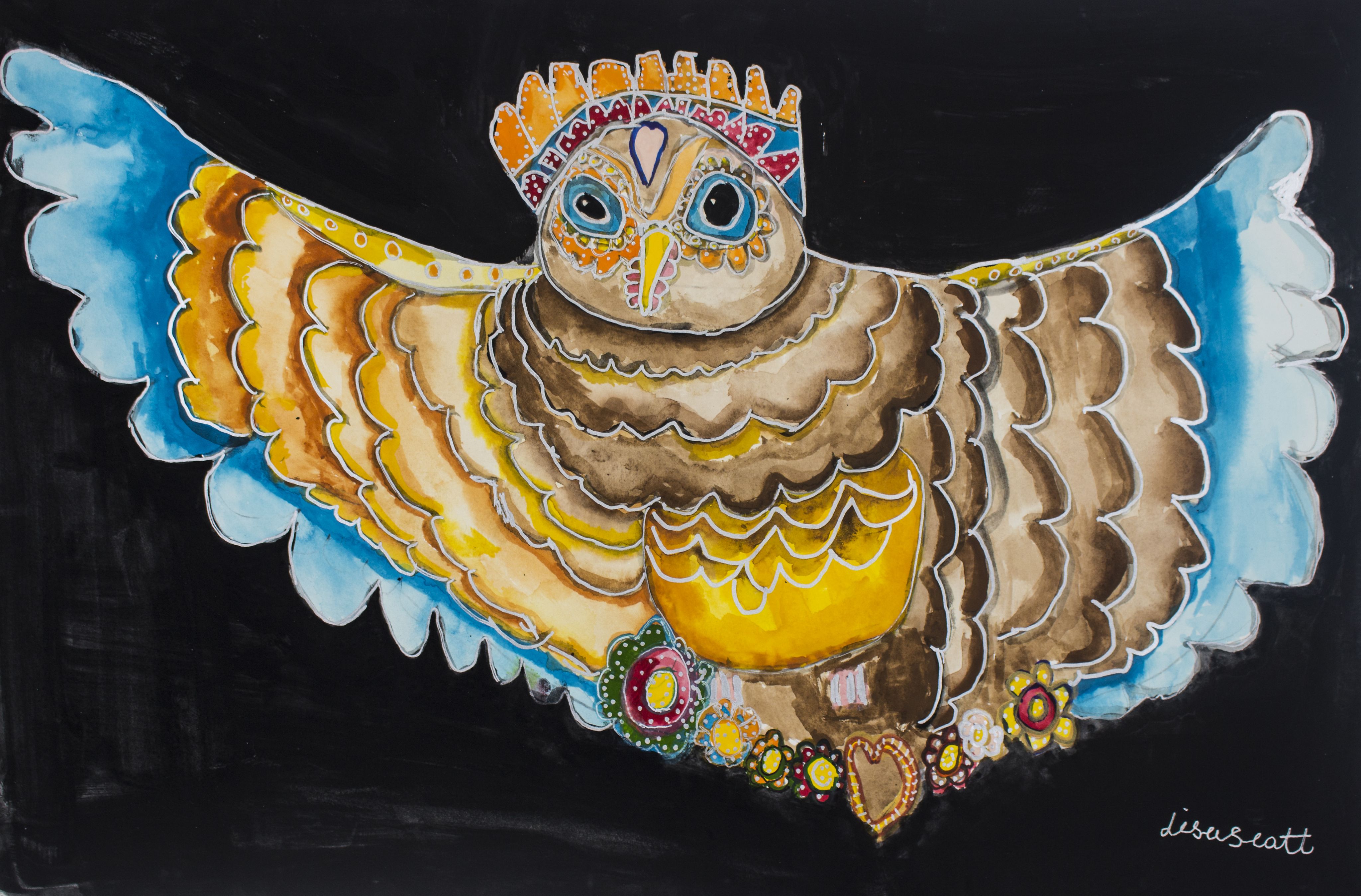Disability Inclusion Action Plan
2023 - 2026

Introduction by CEO
I am pleased to introduce ACER’s first Disability Inclusion Action Plan. This Plan, which will be lodged with the Australian Human Rights Commission, reflects the organisation’s commitment to ongoing improvements in ensuring disability inclusion.
It is estimated that 15% of the world’s population lives with some form of disability, often resulting in significantly reduced access to education and employment.
The UN Convention on the Rights of People with Disability affirms ‘the right of persons with disabilities to education without discrimination and on the basis of equal opportunity, ensuring availability of inclusive education at all levels and lifelong learning’.
Inclusive education and employment are at the heart of ACER’s mission, values and Strategic Plan. For example, our organisation-wide commitment to innovation is reflected in the Disability Inclusion Action Plan’s objectives to ensure inclusive test design and inclusive research methodologies; our commitment to positive relationships is reflected in the Plan’s objectives to provide accessible physical and digital environments, reasonable adjustments for candidates and staff, and support and leadership training in inclusive practices; and our commitment to individual staff fulfillment is reflected in the Plan’s objectives to support all staff, especially those with lived experience of disability.
I would like to acknowledge and thank the members of the Disability Advisory Committee, the Diversity, Inclusion and Reconciliation Committee and other staff who assisted in the development of this Plan.
Geoff Masters AO
CHIEF EXECUTIVE OFFICER

Background and Commitment
The ACER Disability Inclusion Action Plan (DIAP) 2023 – 2026 represents the first such plan focussed on disability inclusion and accessibility for ACER. The development of the DIAP reflects ACER’s commitment to creating a socially just, accessible and inclusive environment for people living with disability, as well as its adherence to relevant legislative requirements. ACER affirms that all people living with disability have a right to equitable access — be they clients, candidates, employees or visitors.
ACER acknowledges the guiding principles of the United Nations Convention on the Rights of Persons with Disabilities (CRPD)1 and accepts the bio-psycho-social model of disability adopted in the Convention:
“Disability is an evolving concept and disability results from the interaction between persons with impairments and attitudinal and environmental barriers that hinders their full and effective participation in society on an equal basis with others.” 2
In line with the UN CRPD, ACER supports a broad definition of people with disability, which includes:
- people who identify as having a disability
- people living with physical, sensory, mental health, intellectual and/or neurological conditions which, in interaction with societal barriers, may impact equal participation and opportunity.
ACER also acknowledges those who may not identify as living with a disability, but who may be positively impacted by this plan – such as people with lived experience of neurodiversity, mental health issues and chronic health conditions; the Deaf Community; primary carers of people with disabilities; and other people whose lives are affected by those living with disabilities.
The World Health Organisation (WHO) estimates that around 1 billion people live with disability. This corresponds to around 15% of the world’s population, with that number increasing due to ageing populations and increases in chronic illness. WHO further recognises that the obstacles experienced by people with disability may be compounded by other systemic exclusions experienced by people, including those based on age, ethnicity, gender identity, culture, religion, sexual orientation, First Nation status and other attributes.
In developing this plan, ACER commits to minimising and removing attitudinal and environmental barriers to participation across the organisation, and to creating a positive, inclusive, and accessible environment. The Disability Inclusion Action Plan 2023 – 2026 represents a significant step toward achieving ACER’s aspiration to be a leader in disability inclusion and accessibility.
The ACER Disability Inclusion Action Plan 2023–2026 identifies four priority areas:
- Organisational Culture
- Digital and Physical Accessibility and Inclusion
- Assessment and Research
- Staff Recruitment, Retention, Support and Advancement
1 https://www.un.org/development/desa/disabilities/convention-on-the-rights-of-persons-with-disabilities.html
2 Preamble: https://www.un.org/disabilities/documents/convention/convention_accessible_pdf.pdf
Legislative Context
The Disability Inclusion Action Plan has been developed within the following legislative contexts, aligning with ACER operational locations.
Australia:
Disability Discrimination Act (DDA) 1992 (Cth)
Disability Standards for Education 2005 (Cth)
India
Rights of Persons with Disabilities Act 2016
Indonesia
Law No.39/1999 on Human Rights
Malaysia
Persons with Disability Act 2008
United Arab Emirates
Federal Law No. (29) of 2006 Concerning the Rights of People with Special Needs
United Kingdom
Equality Act of 2010
ACER acknowledges that its work has global reach and commits to ensuring that the work aligns with local legislative requirements in relation to anti-discrimination and disability inclusion where that differs from the above.
Development of the Plan
Development of the DIAP was undertaken in consultation with stakeholders across the organisation through the Disability Advisory Committee (DAC), which comprises:
- staff with lived experience of disability, chronic health conditions, neurodiversity and/or mental health conditions
- staff with experience caring for those with disability, chronic health conditions, neurodiversity and/or mental health conditions
- staff with an explicit interest in disability access and inclusion.
Consultation was also undertaken with the operational leaders responsible for actions within the plan.
Implementation of the Plan
Responsibility for implementing the DIAP is shared across the organisation. Representatives from operational areas (responsible officers) who are accountable for implementing actions on the plan will report on progress to the ACER Diversity, Inclusion and Reconciliation Committee, comprising senior executive staff representatives.
The ACER Diversity, Inclusion and Reconciliation Committee will provide monitoring and oversight of the DIAP, advising on resourcing implications, and will provide bi-annual reporting to ACER Executive.
The Disability Advisory Committee will provide advice and feedback on implementation of DIAP actions to ensure that the perspectives of staff with lived experience of disability are central to decision-making, aligning with the ethos of ‘nothing about us, without us.’
Communication about progress on the plan will be provided on a bi-annual basis to the organisation via the ACER Intranet.

Priority 1: Organisational Culture and Understanding
ACER champions disability inclusion and accessibility in all activities and celebrates disability pride
GOAL 1 ACER is known as a welcoming and supportive place for staff, test candidates and visitors who have a disability or mental health condition, are neurodiverse, are primary carers and/or are living with a chronic health condition.
|
# |
Action |
Senior Leader Accountable |
Commencing |
|---|---|---|---|
|
1.1 |
Establish an organisation-wide training program on disability inclusion, entailing: • Disability Awareness training for all staff |
Chief People Officer |
2023 |
GOAL 2 ACER demonstrates its commitment to disability inclusion and accessibility
|
1.2 |
Establish a dedicated professional development fund to support the maintenance and growth of best practice in relation to accessibility and disability inclusion. |
Chief Operations Officer |
2023 |
|
1.3 |
Celebrate and promote inclusion and disability pride at ACER by acknowledging days of significance and promoting disability related research and innovation. |
Director Corporate Communications |
2023 |
|
1.4 |
Develop and implement guidelines to ensure ACER’s internal and external publications reflect societal diversity inclusive of people with disability. |
Director Corporate Communications |
2023 |
|
1.5 |
Review current public facing publications and material content to ensure it is inclusive in intent, language use and image use e.g., candidate information and assessment resources. |
Deputy CEO — Professional Resources |
2023 |
|
1.6 |
Develop a diversity and inclusion resource, inclusive of disability focussed content*, available to all ACER staff via the Intranet to inform their work including: |
Chief People Officer |
2023 |
|
1.7 |
Develop a Disability Inclusion and Accessibility Policy to work in tandem with the Equity, Diversity and Inclusion Policy, to articulate expectations around disability inclusion and accessibility across the organisation. |
Chief People Officer |
2023 |
|
1.8 |
Develop and implement guidelines for highlighting disability inclusion and accessibility considerations in client interactions and when submitting proposals for project work and responding to formal procurement tenders. |
Deputy CEO — Professional Resources |
2023/4 |
|
1.9 |
ACER to participate in the Australian Network on Disability ‘Access and Inclusion Index’ to monitor and benchmark progress. |
Chief People Officer |
2024/5 |
* Refers to actions which encompass accessibility and disability inclusion, but which also have a broader Diversity and Inclusion focus.
Priority 2: Digital and Physical Accessibility and Inclusion
ACER progressively reduces or removes physical and digital barriers to inclusion and accessibility
GOAL 1 ACER ensures that its digital and physical environment are inclusive and accessible through a program of continual improvement
|
# |
Action |
Senior Leader Accountable |
Commencing |
|---|---|---|---|
|
2.1 |
Provide appropriate annual resourcing to support initiatives aimed at improving digital and physical accessibility across the organisation. |
Chief Operations Officer |
2023 |
GOAL 2 ACER adopts a human-rights by design1 approach to the provision of digital services and facilities
|
2.2 |
Embed accessibility requirements as standard when procuring and/or developing software, digital resources and platforms. |
Chief Operations Officer |
2024 |
|
2.3 |
Establish an ongoing audit and prioritisation plan for addressing non-compliance for online resources, systems and applications against the required WCAG standard for each jurisdiction2. |
Chief Information Officer |
2023 |
|
2.4 |
Develop and implement best-practice guidelines to ensure that brand assets, templates, web materials, staff and community marketing, and other communications (including social media communications) are provided in accessible and easily navigated formats. |
Director Corporate Communications |
2023 |
GOAL 3 ACER’s physical environment is safe, navigable, accessible, and inclusive for staff, candidates and visitors of all abilities
|
2.5 |
Conduct an accessibility audit and establish a prioritisation plan for addressing environmental accessibility issues for all ACER offices and ensure that facilities meet the needs of people with disabilities, inclusive of internal and external features, furniture and technology. |
Facilities Manager and Officer(s) |
2023 |
|
2.6 |
Review current systems for reporting accessibility challenges and establish system for prioritisation of rectification. |
Facilities Manager and Officer(s) |
2024 |
|
2.7 |
Establish a system to facilitate remote home workstation assessments to accommodate any requirement relating to a lived condition. |
Chief People Officer |
2023 |
|
2.8 |
Demonstrate ACER’s commitment to creating an inclusive environment in offices and testing centres through: • Highlighting accessible features (bathroom facilities, parking, lifts, assistive technology) on maps • Clear and consistent signage (e.g., font size and colour contrast, braille, tactile, consistent colouring) • Infrastructure to support assistance animals |
Facilities Manager and Officer(s) Project Directors |
2024 |
1 A human-rights by design approach to technology is defined by the Australian Human Rights Commission as “a systematic process for embedding human rights standards and compliance into the design, development and deployment of new technologies.” (Reference: Human Rights and Technology Final Report 2021: https://humanrights.gov.au/our-work/rights-and-freedoms/publications/human-rights-and-technology-final-report-2021)
2 WCAG 2.1 AA to be used as minimum standard, wherever possible.
Priority 3: Assessment and Research
ACER demonstrates a best practice approach to inclusive and accessible assessment design and administration, and inclusive research practice
GOAL 1 ACER uses a best practice approach to assessment design that incorporates Universal Design for Learning (UDL) and other inclusive frameworks or pedagogies
|
# |
Action |
Senior Leader Accountable |
Commencing |
|---|---|---|---|
|
3.1 |
Design and implement approaches to improve accessibility of assessment, through adoption of Universal Design for Learning (UDL) and other inclusive frameworks. This will be enabled by: • Establishing staff expertise and knowledge sharing across the organisation via a Community of Practice. • Developing guidelines for accessible assessment design • Auditing existing assessment materials • Utilising lived experience and / or other expertise to review assessment materials |
Head of Division Assessment and Psychometric Research |
2023/2024 |
GOAL 2 ACER provides an assessment experience that is equitable, inclusive and actively supports candidates with disabilities
|
3.2 |
Provide a consistent, best practice approach to the provision of reasonable adjustments for assessments across the organisation. |
Deputy CEO — Professional Resources |
2023 |
|
3.3 |
Collect and report on data relating to requests for assessment adjustments across all tests administered by ACER to inform future test development, planning, improvement and maintenance of equitable testing conditions. |
Deputy CEO — Professional Resources |
2023 |
|
3.4 |
Evaluate testing experiences for people who seek adjustments to inform continuous improvement. |
Deputy CEO — Professional Resources |
2023 |
GOAL 3 ACER actively promotes and demonstrates best practice disability inclusion, accessibility principles and co-design in research
|
3.5 |
Develop best practice guidelines for engaging people with lived experience in co-design of research which impacts them. |
Head of Division Education Research, Policy and Development |
2024 |
Priority 4: Staff Recruitment, Retention, Support and Advancement
ACER is recognised as an ‘employer of choice’ for people living with disabilities
GOAL Prospective, new and current staff with disabilities are supported to thrive and succeed in their work at ACER
|
# |
Action |
Senior Leader Accountable |
Commencing |
|---|---|---|---|
|
4.1 |
Review HR policy and procedures to improve disability inclusion and access, prioritising: |
Chief People Officer |
2023 |
|
4.2 |
Develop and promote a person-centred process to provide appropriate workplace adjustments to staff living with disabilities which is timely, confidential, and respectful. |
Chief People Officer |
2023 |
|
4.3 |
Establish a centralised fund for provision of workplace adjustments, equipment, software, additional travel expenses and research costs. |
Chief Operations Officer |
2024 |
|
4.4 |
Establish a transparent mechanism for staff living with disability to identify concerns and barriers and provide suggestions and solutions. Embed clear accountabilities to address concerns. |
Chief People Officer |
2023 |
|
4.5 |
Develop and implement Performance Relative to Opportunity guidelines for career advancement applications. |
Chief People Officer |
2024 |
|
4.6 |
Collect and report on data measuring recruitment, retention, progression and experience of staff with disability. |
Chief People Officer |
2024 |
|
4.7 |
Identify Disability Employment Programs, internship opportunities or other strategies that ACER can participate in to support recruitment of people with disability. |
Chief People Officer |
2023 |
Appendix
Other Related Policies
- ACER Leadership Framework
- Diversity and Inclusion Framework
- Code of Conduct
- Diversity and Inclusion Policy
- Staff Recruitment, Selection and Appointment Policy
- Unacceptable Behaviours Policy
Definitions
Accessibility
The term accessibility can be applied in a range of contexts – the physical and digital environment, products and services. Accessibility can be measured by the capacity for a person with a disability to navigate, engage with, use and/or participate without impediment on an equitable basis as a person without a disability.
Inclusion
Inclusion is the way an organisation’s culture, values, workplaces and behaviours make a person feel valued, included and able to participate fully. It relates to an environment where all people are treated fairly and respectfully, with equity of opportunity.
Governance
Membership of Diversity, Inclusion and Reconciliation Committee:
- CEO, ACER UK
- CEO, ACER India
- Deputy CEO Professional Resources
- Chief People Officer
- Chief Information Officer
- Director, Corporate Communications
- Director, Tertiary and Professional Education Services
- ACER Commercial Lawyer
- Senior Advisor Diversity and Inclusion
- Chair, Reconciliation Action Plan Working Group

Owl and Crown
Lisa Scott, 2018
Biography and storytelling are cornerstones of Lisa’s discipline.
She has exhibited widely (Underbelly Arts Festival, Sydney Contemporary, et al.) and her works are held in numerous public and private collections across Australia, including a key acquisition by the University of Technology, Sydney.
The owl symbolically connects to ideas around knowledge and wisdom aligning with the core work of ACER. The capacity for flight is reflective of the expansive freedom inherent in education.

Studio A is a supported studio based in Sydney that tackles the barriers artists with intellectual disability face in accessing conventional education, professional development pathways and opportunities needed to be successful visual artists. This Social Enterprise paves professional pathways for such artists so that they can achieve their artistic and economic aspirations.
Studio A provides its artists with a working studio space equipped with specialist materials and support staff. It also manages an annual exhibition program and facilitates weekly workshops provided by invited contemporary artists.
Studio A supports a variety of artists working within a range of disciplines and strategically links Studio A artwork with an equally diverse range of target markets including art, design, craft, and corporate markets.
Acknowledgement of Country
ACER acknowledges the Aboriginal and Torres Strait Islander traditional owners of the unceded land on which we work and learn. We pay respect to the Elders, past, present, and emerging. We respect the place of Indigenous Knowledges and recognise that, relative to the rest of Australian society, Aboriginal and Torres Strait Islander peoples are more likely to be living with disability and/or chronic illness. ACER also acknowledges First Nation people beyond Australia and the contribution and knowledges they share.